The barbell back squat – often referred to as “the king” of all exercises.
It’s known for its unparalleled ability to build lower body strength and muscle mass in the quads, hamstring and glutes… Not to mention it facilitates strong, healthy posture.
If there’s one exercise you should master, I believe that this is it. And when it comes to getting stronger and making solid progress with your squat, you have two main options:
- Eat more, bulk up, and build new muscle
- Improve your technique
In this article I want to offer you 5 less commonly known ways to improve your technique. These are all things that you can do right now to strengthen your back squat, smash through plateaus, and hit a new PR.
Note: You can see me demonstrate some of the techniques below in this this video:
But before we get into these techniques, you gotta get down the basics.
The fact is that the vast majority of guys have terrible form… And none of the tips below are going to help you out until you get down the basics.
So before getting into the tips below, check out this article and see if you’re making any the 5 most common squat mistakes.
1. Use an “active foot” stance
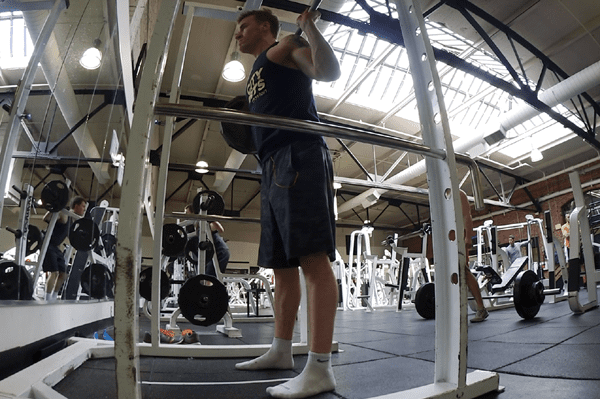
Using a strong, balanced stance is key…
When it comes to squatting, most people know that your heels should never leave the floor.
In fact, it’s usually best to think about keeping most of your weight on your heels and pushing through your heels when standing back up…
And there’s nothing wrong with this. But the fact is that you should also utilize your “midfoot” in the squat – and improve your strength in the process.
- After you unrack the bar, distribute your weight evenly between your heels and the balls of your feet.
- Next “corkscrew” your feet into the ground as if you were trying to push your knees out to your sides. This will create a “tripod” effect between your heel, inner midfoot and outer midfoot, because it will distribute some of the weight from the ball of your foot to the outside edge of your foot, just below your pinky toes.
- Maintain this tension throughout the movement. It should feel like you’re pushing through your heels, the ball of your foot, and the outer edge under the pinky toe as you stand back up.
2. Take a huge breath at the top of the movement
Breathing is a crucial part of every exercise… and it’s even more crucial when it comes to the squat.
Taking in a huge breath while standing, and just before starting each rep, will make you structurally more stable and strong. Your breath should fill your belly and also expand your chest.
- By filling your belly with air, you’re using the full length of your diaphragm and this will assist you in contacting your abs and help keep you upright, as well as protecting your lower back.
- By expanding your chest you’ll ensure that you stay upright and don’t lean forward as you descend into the bottom of your squat
Note: You should fully inhale before beginning to drop down and you shouldn’t exhale until you already have some upwards momentum – and your exhale should be a shallow on, fully exhaling will compromise the above benefits.
3. “Bounce” out of the bottom
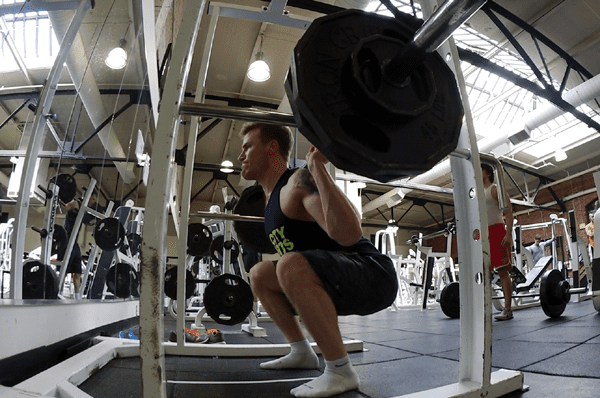
Losing your momentum at the bottom of the lift must be avoided…
“Bouncing” doesn’t sound like a good thing when it comes to lifting heavy weights. This isn’t a fucking moonwalk, amiright?
But when it comes to some movements, like the squat, thinking of ever-so-slightly “bouncing” out of the bottom of the movement can be a good thing.
You see – as you descend many of your lower body muscles are lengthening – think of a rubber band stretching out. By making sure that you make a very quick transition at the bottom of the squat, you effectively utilize a “rebound” effect – and make use of the muscles’ natural inclination to want to shorten and contract.
Next time you squat, experiment with this technique using a moderate weight. Play with what it feels like to get a slight “bounce” out of the bottom of the movement. Doing so properly will effectively strengthen your squat and prevent you from getting stuck or losing momentum when you’re sitting deep into your squat.
4. Do unilateral work
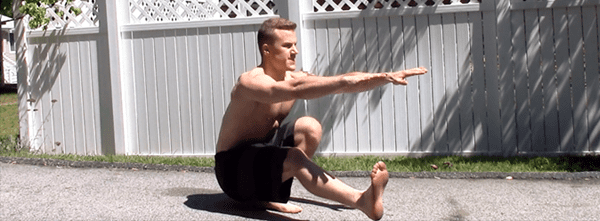
Sometimes one is greater than two…
While squatting is the shit and I love it and I truly believe it’s the best exercise, especially in regards to the lower body – there are other exercises that are worth doing, too.
And when it comes to lower body work, doing unilateral (aka single leg) movements will greatly compliment your squatting strength.
Single leg movements strengthen the primary movers (quads, hamstrings, glutes) just like the squat does, but they also target a lot of the smaller, stabilizer leg muscles that the squat doesn’t hit as hard… And strengthening these could be the difference from hitting a new squat PR or staying blocked by that same goddamn plateau.
While squats should remain your primary exercise, I suggest getting stronger in the following unilateral movements:
- Pistol squats
- Walking lunges
- Split squats
For more info on these movements, check out this article I wrote a few months back.
5. Do “pause” reps
Pause reps are a great way to improve your performance in most exercises. I actually just wrote an article that applies “pause” reps to the bench press.
The fact is that most of us are weakest at the bottom of the squatting motion – that’s where we tend to get “stuck”… and this is what prevents most of us from getting stronger and squatting more and more weight.
“Pause” reps are made to strengthen your strength and power in this exact position. All you need to do to perform a “pause” rep is to pause at your deepest position in the squat. Pause for about 3 seconds and then stand back up – as explosively as you can.
Note: Start with a light weight when you do pause reps, because they’re much harder than a regular rep.
You can incorporate them into your program by doing them instead of regular reps for a particular day or by adding in a set of pause rep squats after you’re done with your normal squatting routine.

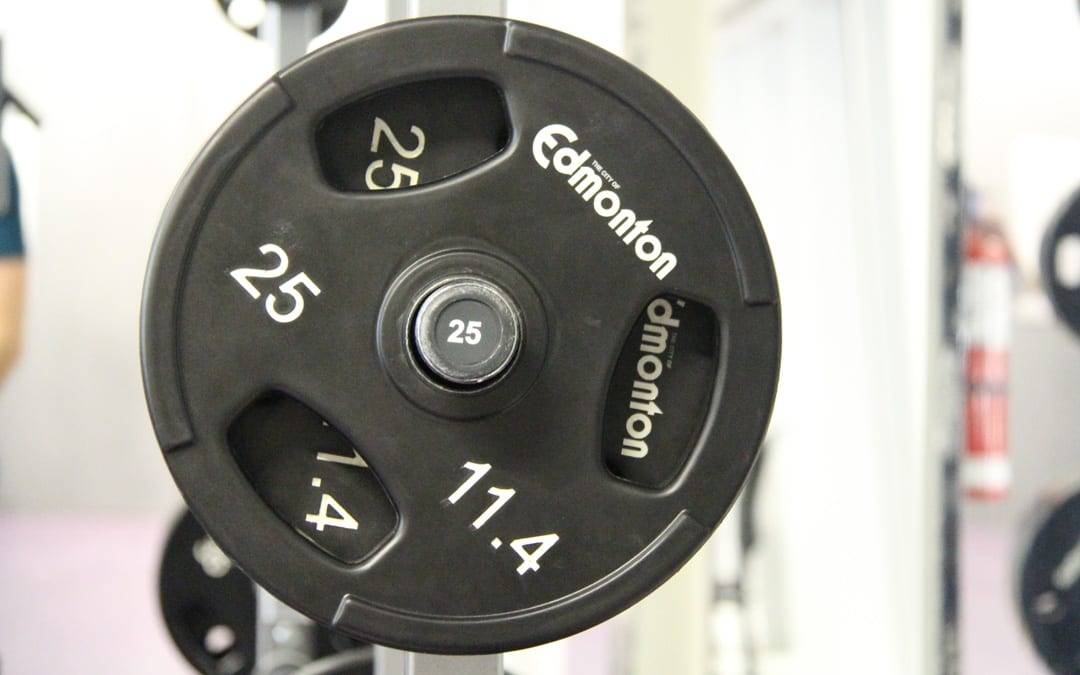

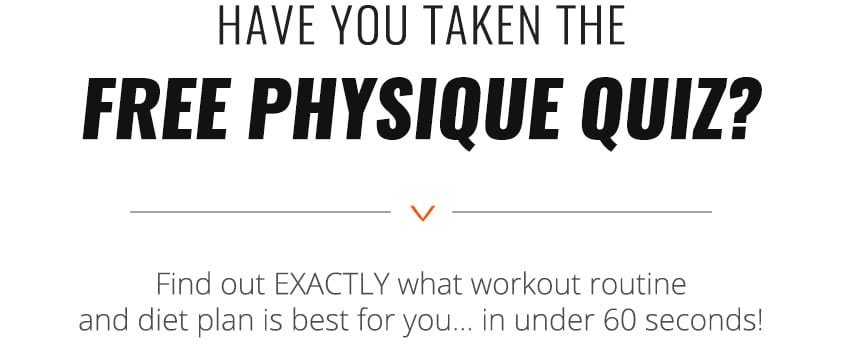
Wait. I thought the deadlift was the greatest exercise ever? 🙂 Nah, you’re right. It’s all about the back squat. I’ve worked with several breathing techniques, including the one you mention here. Recently I’ve found a tight, shallow breathing style allows me to better maintain the “tightness” we always talk about. In fact, I now find that when I take deep breaths during my set, I lose too much of my power, and have to rack the bar. Obviously, like anything, people have to figure out what works for them. In the long it’s gonna be more about that than anything else in the gym. That took my years to learn. There just isn’t “one way.”
Good point Adam – I’m going to add in that I never fully exhale (only a shallow breath out), which seems in line with what you’re saying.
What’s your experience with squatting stances and where you hold your weight?
I think, like a lot of us, I started with a bunch of rules for squatting stance, which have all found exceptions. Most people I try to keep their toes parallel and screwed into the floor, but if we can’t get glute-activation in that position, or it causes them any pain, we rotate the feet out until the pain goes away. We can always try to straighten things out one they get stronger… or never. Same goes for width. I prefer a tight stance, but some people just lack the hip mobility to go deep without going wide. We try to split time between mobilizing the LPHC, which is always tight… on everybody… and just getting down into the fullest range possible without compromising the spine shape. Weight, like you said, should be evenly spread on the whole foot, but people will feel it mostly on the outside crest from pinky to heel. If not, there’s gonna be pain at some point. Probably in the knees.